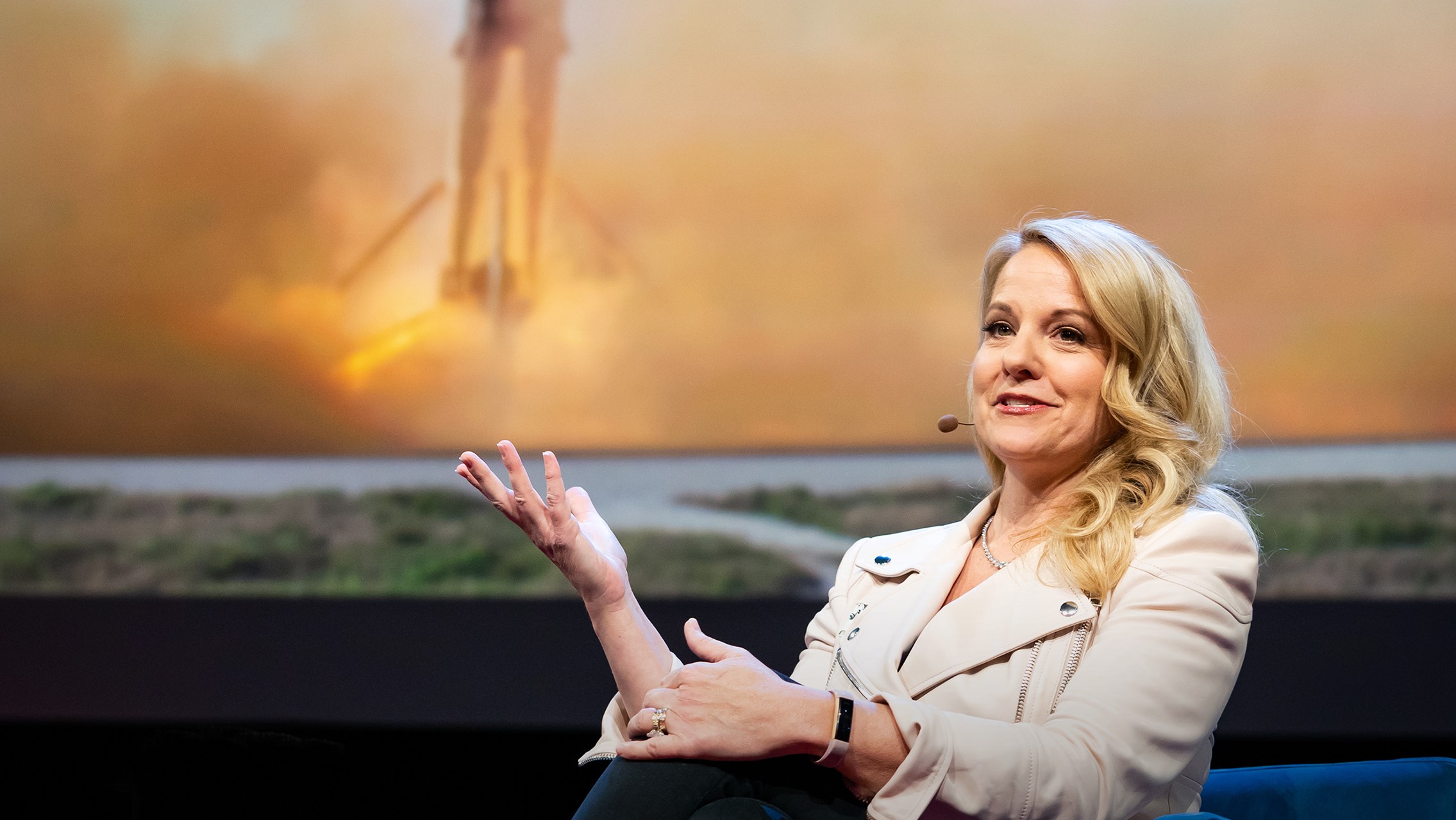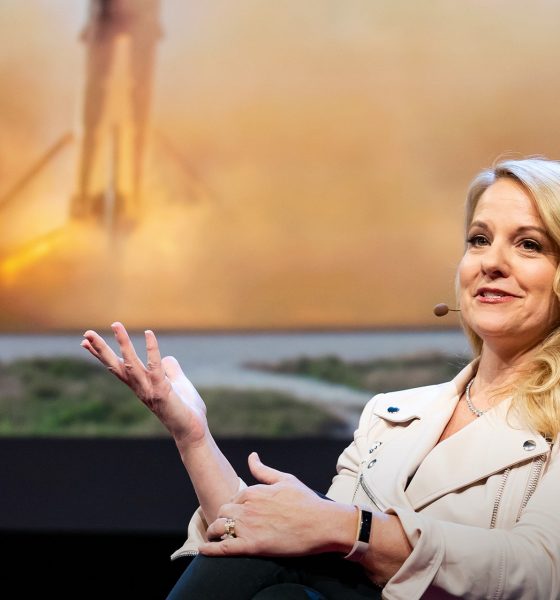The Information reports that SpaceX President and COO Gwynne Shotwell “will assume oversight” of the company’s Starship program and Starbase facilities, seemingly stepping in for Elon Musk as the CEO shifts his focus to Twitter.
In his own words, Twitter appears to be in a precarious position after the Tesla CEO and SpaceX founder purchased the social media platform for an inflated price of $44 billion, saddling it with immense debt. The immediate implementation of far-reaching changes (or threats of changes) have scared off existing advertisers, slashing the company’s already tenuous revenue, and Musk himself admitted on November 10th that the company as it stands is losing billions of dollars per year and could face bankruptcy if its plan to charge a subscription for a verification badge – a service that was, in theory, previously free – isn’t highly successful.
Simultaneously, poorly planned layoffs that targeted half of all Twitter staff appear to have maimed the company’s technical expertise and triggered the departure of numerous senior employees and executives, while also catching the attention of the US Federal Trade Commission. If he wants Twitter to survive, let alone thrive, it appears that Musk will have to divert most of his attention to the social media app for the indefinite future, forcing him to step back from some of his day-to-day work at SpaceX and Tesla.
Enter Gwynne Shotwell, a long-time executive second only to Musk that has often been viewed as “the adult in the room” – a source of stability that bridges the gaps between the CEO’s chaotic and whiplash-inducing style of management. Hired in 2002, it’s entirely possible that SpaceX wouldn’t have survived if her sales acumen hadn’t convinced NASA to take a billion-dollar bet on the company in 2008. But NASA ultimately took that bet right when SpaceX needed it most, and Shotwell went on to help secure another several billion dollars of launch contracts from all possible sectors.
She became President and COO after navigating NASA’s first major SpaceX contract in 2008 and still holds both positions 14 years later. Given that position, The Information’s report is thus somewhat surprising. As Chief Operating Officer, Shotwell was, by definition, already overseeing Starbase operations and the Starship program to some degree. It’s possible that her day-to-day work mainly focused on SpaceX’s Dragon, Falcon, and Starlink programs, but it would be almost impossible for a COO with a reputation as good as hers not to pay close attention to a program that likely represents half (or more) of SpaceX’s R&D spending.
More importantly, Starship, according to CEO Elon Musk, is the future of all SpaceX programs. If successful, the fully-reusable rocket will be able to launch at least five times the payload of SpaceX’s workhorse Falcon 9 rocket for even less than the smaller rocket’s already extraordinary marginal cost of ~$15 million. With ultra-low launch costs and orbital refueling, Starship could become the most high-performance rocket in history and outclass multi-billion-dollar single-use behemoths like Saturn V and SLS for a price tag less than Falcon 9 and Falcon Heavy today ($70-100 million).
Eventually, with enough experience and refinement, that combination of cheap launches and reliable refueling could allow SpaceX to achieve its ultimate purpose: building a self-sustaining human presence on Mars. In the nearer term, Musk once stated that SpaceX could go bankrupt if Starship wasn’t ready to begin launching the next generation of Starlink internet satellites in the near future, without which the constellation would apparently be a financial liability. While the CEO was almost certainly exaggerating the severity of the situation, it still emphasizes that Starship is viewed as a keystone that can ensure the long-term sustainability of all of SpaceX’s programs.
In April 2021, even NASA fully bought into Starship, awarding SpaceX a $2.9 billion contract to develop the system and create a version of the rocket’s upper stage that can land astronauts and cargo on the Moon. In 2022 alone, that Human Landing System (HLS) contract earned SpaceX more than $800 million, and NASA’s attachment to Starship has made the program’s success even more essential.
It’s little surprise, then, that Musk would explicitly ask Shotwell – SpaceX’s biggest ‘gun’ – to oversee the program in his unplanned absence. It’s unclear if that means she will hand the day-to-day operations of other major SpaceX programs to direct reports or if the new position involves an expansion of her existing Starbase and Starship oversight. But it’s safe to assume that Shotwell’s deeper involvement is unlikely to hurt the programs.
The Information also reports that SpaceX executive Mark Juncosa – a brash, unconventional engineer that’s successfully led the Starlink program since Musk fired several over-cautious executives in 2018 – took over technical leadership of the Starship program in the summer of 2022. Executives Joe Petrzelka and Bill Riley, who previously filled that role alone, now report to Juncosa, who reports to Shotwell.

Elon Musk
Elon Musk’s X will start using a Tesla-like software update strategy
The initiative seems designed to accelerate updates to the social media platform, while maintaining maximum transparency.

Elon Musk’s social media platform X will adopt a Tesla-esque approach to software updates for its algorithm.
The initiative seems designed to accelerate updates to the social media platform, while maintaining maximum transparency.
X’s updates to its updates
As per Musk in a post on X, the social media company will be making a new algorithm to determine what organic and advertising posts are recommended to users. These updates would then be repeated every four weeks.
“We will make the new 𝕏 algorithm, including all code used to determine what organic and advertising posts are recommended to users, open source in 7 days. This will be repeated every 4 weeks, with comprehensive developer notes, to help you understand what changed,” Musk wrote in his post.
The initiative somewhat mirrors Tesla’s over-the-air update model, where vehicle software is regularly refined and pushed to users with detailed release notes. This should allow users to better understand the details of X’s every update and foster a healthy feedback loop for the social media platform.
xAI and X
X, formerly Twitter, has been acquired by Elon Musk’s artificial intelligence startup, xAI last year. Since then, xAI has seen a rapid rise in valuation. Following the company’s the company’s upsized $20 billion Series E funding round, estimates now suggest that xAI is worth tens about $230 to $235 billion. That’s several times larger than Tesla when Elon Musk received his controversial 2018 CEO Performance Award.
As per xAI, the Series E funding round attracted a diverse group of investors, including Valor Equity Partners, Stepstone Group, Fidelity Management & Research Company, Qatar Investment Authority, MGX, and Baron Capital Group, among others. Strategic partners NVIDIA and Cisco Investments also continued support for building the world’s largest GPU clusters.
News
Tesla FSD Supervised wins MotorTrend’s Best Driver Assistance Award
The decision marks a notable reversal for the publication from prior years, with judges citing major real-world improvements that pushed Tesla’s latest FSD software ahead of every competing ADAS system.

Tesla’s Full Self-Driving (Supervised) system has been named the best driver-assistance technology on the market, earning top honors at the 2026 MotorTrend Best Tech Awards.
The decision marks a notable reversal for the publication from prior years, with judges citing major real-world improvements that pushed Tesla’s latest FSD software ahead of every competing ADAS system. And it wasn’t even close.
MotorTrend reverses course
MotorTrend awarded Tesla FSD (Supervised) its 2026 Best Tech Driver Assistance title after extensive testing of the latest v14 software. The publication acknowledged that it had previously criticized earlier versions of FSD for erratic behavior and near-miss incidents, ultimately favoring rivals such as GM’s Super Cruise in earlier evaluations.
According to MotorTrend, the newest iteration of FSD resolved many of those shortcomings. Testers said v14 showed far smoother behavior in complex urban scenarios, including unprotected left turns, traffic circles, emergency vehicles, and dense city streets. While the system still requires constant driver supervision, judges concluded that no other advanced driver-assistance system currently matches its breadth of capability.
Unlike rival systems that rely on combinations of cameras, radar, lidar, and mapped highways, Tesla’s FSD operates using a camera-only approach and is capable of driving on city streets, rural roads, and freeways. MotorTrend stated that pure utility, the ability to handle nearly all road types, ultimately separated FSD from competitors like Ford BlueCruise, GM Super Cruise, and BMW’s Highway Assistant.
High cost and high capability
MotorTrend also addressed FSD’s pricing, which remains significantly higher than rival systems. Tesla currently charges $8,000 for a one-time purchase or $99 per month for a subscription, compared with far lower upfront and subscription costs from other automakers. The publication noted that the premium is justified given FSD’s unmatched scope and continuous software evolution.
Safety remained a central focus of the evaluation. While testers reported collision-free operation over thousands of miles, they noted ongoing concerns around FSD’s configurable driving modes, including options that allow aggressive driving and speeds beyond posted limits. MotorTrend emphasized that, like all Level 2 systems, FSD still depends on a fully attentive human driver at all times.
Despite those caveats, the publication concluded that Tesla’s rapid software progress fundamentally reshaped the competitive landscape. For drivers seeking the most capable hands-on driver-assistance system available today, MotorTrend concluded Tesla FSD (Supervised) now stands alone at the top.
News
Elon Musk’s Grokipedia surges to 5.6M articles, almost 79% of English Wikipedia
The explosive growth marks a major milestone for the AI-powered online encyclopedia, which was launched by Elon Musk’s xAI just months ago.

Elon Musk’s Grokipedia has grown to an impressive 5,615,201 articles as of today, closing in on 79% of the English Wikipedia’s current total of 7,119,376 articles.
The explosive growth marks a major milestone for the AI-powered online encyclopedia, which was launched by Elon Musk’s xAI just months ago. Needless to say, it would only be a matter of time before Grokipedia exceeds English Wikipedia in sheer volume.
Grokipedia’s rapid growth
xAI’s vision for Grokipedia emphasizes neutrality, while Grok’s reasoning capabilities allow for fast drafting and fact-checking. When Elon Musk announced the initiative in late September 2025, he noted that Grokipedia would be an improvement to Wikipedia because it would be designed to avoid bias.
At the time, Musk noted that Grokipedia “is a necessary step towards the xAI goal of understanding the Universe.”
Grokipedia was launched in late October, and while xAI was careful to list it only as Version 0.1 at the time, the online encyclopedia immediately earned praise. Wikipedia co-founder Larry Sanger highlighted the project’s innovative approach, noting how it leverages AI to fill knowledge gaps and enable rapid updates. Netizens also observed how Grokipedia tends to present articles in a more objective manner compared to Wikipedia, which is edited by humans.
Elon Musk’s ambitious plans
With 5,615,201 total articles, Grokipedia has now grown to almost 79% of English Wikipedia’s article base. This is incredibly quick, though Grokipedia remains text-only for now. xAI, for its part, has now updated the online encyclopedia’s iteration to v0.2.
Elon Musk has shared bold ideas for Grokipedia, including sending a record of the entire knowledge base to space as part of xAI’s mission to preserve and expand human understanding. At some point, Musk stated that Grokipedia will be renamed to Encyclopedia Galactica, and it will be sent to the cosmos.
“When Grokipedia is good enough (long way to go), we will change the name to Encyclopedia Galactica. It will be an open source distillation of all knowledge, including audio, images and video. Join xAI to help build the sci-fi version of the Library of Alexandria!” Musk wrote, adding in a later post that “Copies will be etched in stone and sent to the Moon, Mars and beyond. This time, it will not be lost.”










